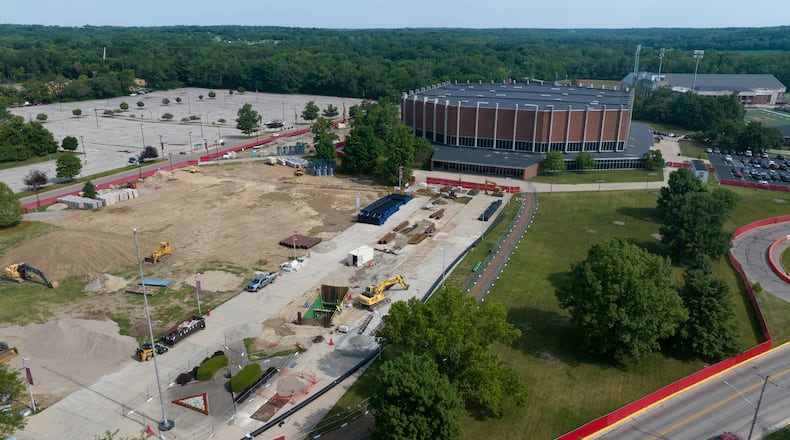The construction work, which is scheduled to be done by summer 2026, will block off some pedestrian and traffic driveways, but school officials said they are hoping to minimize the impact as they drill hundreds of wells to expand the university’s environmentally friendly system.
The North Chiller Plant Geothermal Conversion project is the latest phase of Miami’s commitment “to achieving carbon neutrality on its Oxford campus by 2040,” according to a statement released by school officials.
“This project is the next big step toward reducing carbon emissions,” said Miami officials, who added that the school’s Utility Master Plan has already reduced energy-based carbon emissions by more than 51% since 2008.
The drilling project will see 520 geothermal wells — each 850 feet deep — drilled under the front lawn of Millett Hall.
And the North Chiller Plant in Billings Hall, formerly Billings Natatorium, will be converted to support the geothermal exchange.
The decades-long project to convert Miami’s main campus buildings from traditional heating and cooling systems to a geo-thermal network has saved the school money while providing a more stable and accessible HVAC system largely immune from fluctuating weather patterns and economic disruptions.
Originally, the large student parking lot just west of Millet Hall was to be closed but a revision in the plan now spares students the loss of that parking option.
School officials said “this project has evolved since an earlier project design concept involved 1,100 wells, 600 feet deep, under the parking lot.”
“The current project incurs significant cost savings by siting fewer, but deeper, wells on Millett lawn instead of the parking lot. The earlier design would have necessitated construction of a temporary parking lot near Chestnut Fields during closure of the Millett lot.”
“The current plan eliminates the need for a temporary parking lot across campus, saving green space and potential transportation barriers.”
By 2026, officials said, 72% of buildings on 72% of Miami’s Oxford campus buildings will have been converted off steam to heating hot water or geothermal temperature control.
About the Author
